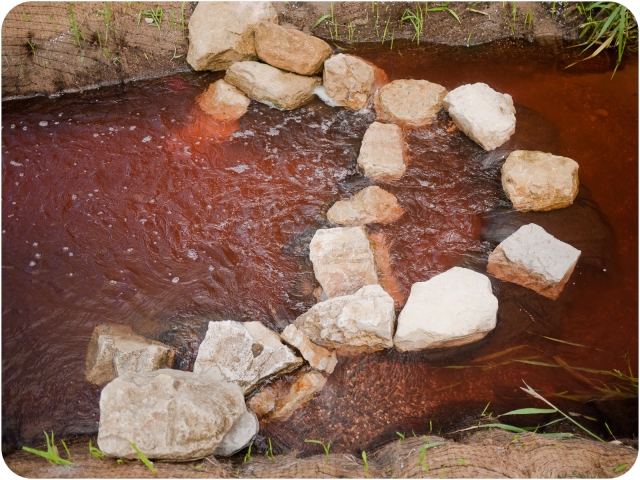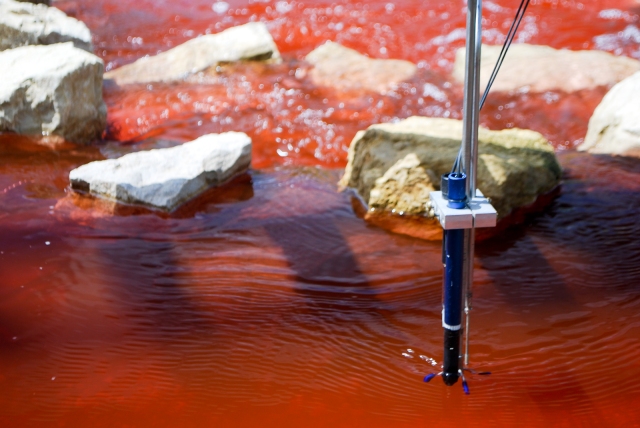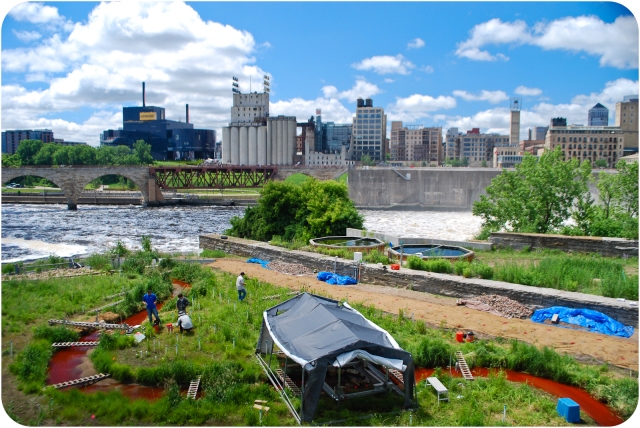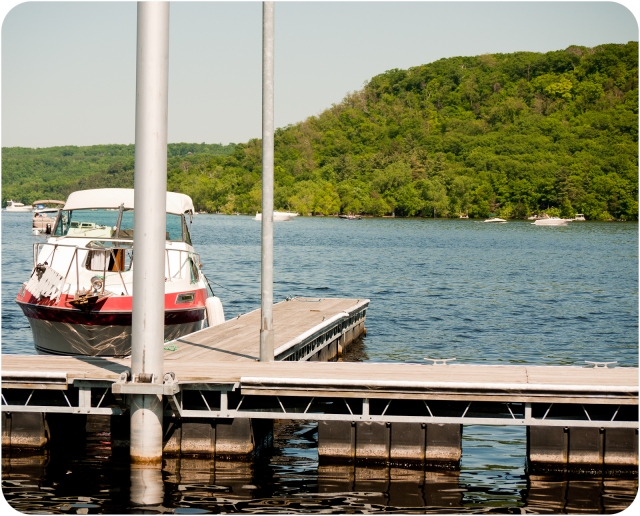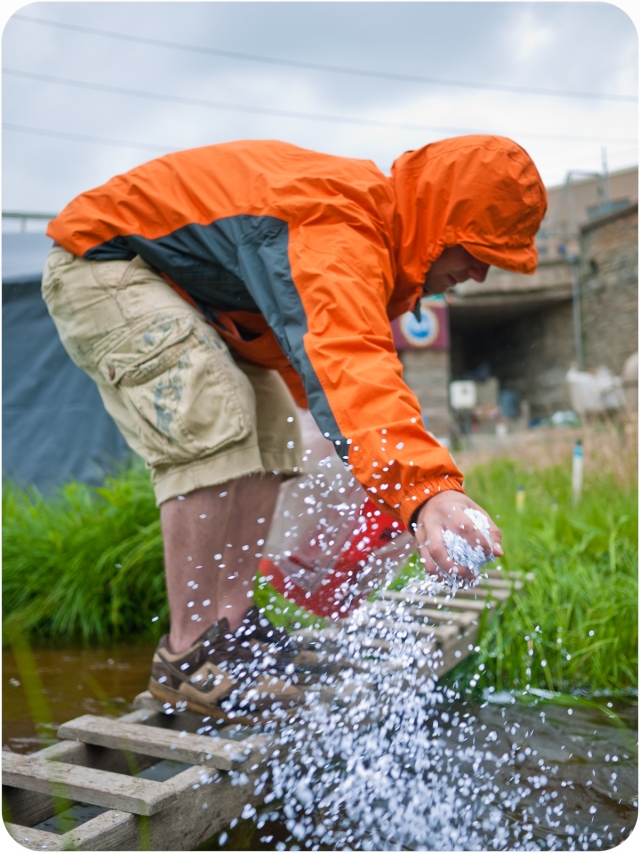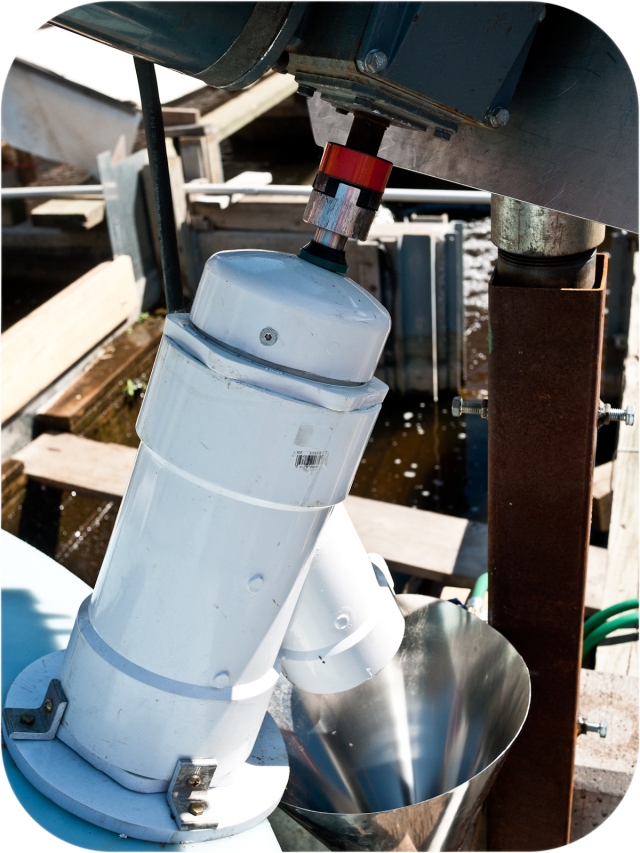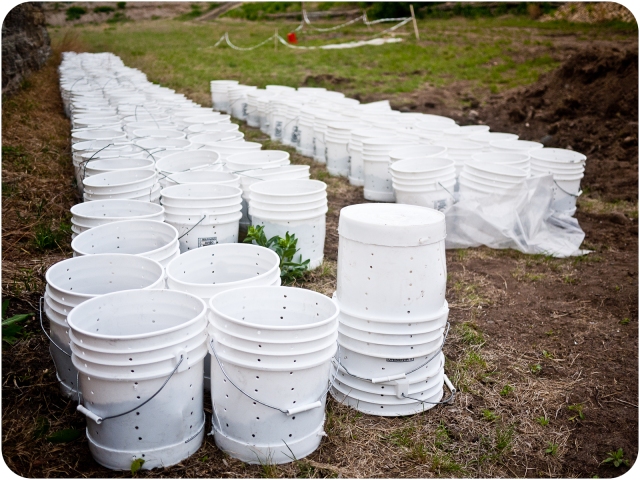The day after the cart tipped over, we mostly just did things that needed to get done. We were running the flow up at 285LPS, over our newly installed rock structures. These rock structures are part of an experiment that is running at the OSL for the NCHRP, the National Cooperative Highway Research Program. This experiment is exploring the installation and effects of different in-water structures that are designed to reduce scour–the erosion of banks caused by fast-moving water.
Scour is–apparently–the number one cause of highway bridge failure in the US, with 46 of 86 major bridge failures resulting from scour near piers from 1961 to 1976. Last summer, the OSL tested how installing rock vanes effected scour. This summer, we’re testing out the effectiveness of cross-vanes as anti-scour measures. There are two of these cross-vanes–one upstream and the other downstream. From downstream they look like an uppercase “A” …in 500pt rock-type (heh) font. There are two layers to each cross-vane: the footer rocks at the bottom that are wrapped in black “geotextile” cloth, resting on a bed of gravel, and the header rocks, which are perched (bare) on top of the footer rocks. It took 2 days to get these built correctly.
From what I have gathered, the idea is that the water flows over these structures (they are more inclined as you get closer to the bank, biasing the water to pass over the center of the cross-vane), and is directed away from the banks. These banks normally tend to get scoured away–especially at bends in the stream or river as the water’s momentum causes it to careen into the far bank.
We had hoped that with a calibrated cart we would be able to turn the flow and sediment up and get data about the inevitable formation of a scour-hole just downstream from each cross-vane. Instead, we surveyed every fifteen minutes for the deepest point in each scour hole.
We decided to try turning on the cart and all its instruments on Thursday. However, before this happened, I took advantage of everything being offline and re-grouped all the cables (there are a lot of cables) in an effort to make the place at which I’ll be spending a fair amount of the summer a bit tidier. I also made a mini-desk that allows me to hide the carefully-organized cables underneath, while also giving me a nice flat surface upon which to put the mouse and keyboard. I was kind of proud of this simple desk. I needed to use a chop-saw to cut the wood, which was a little exciting. Here it is:
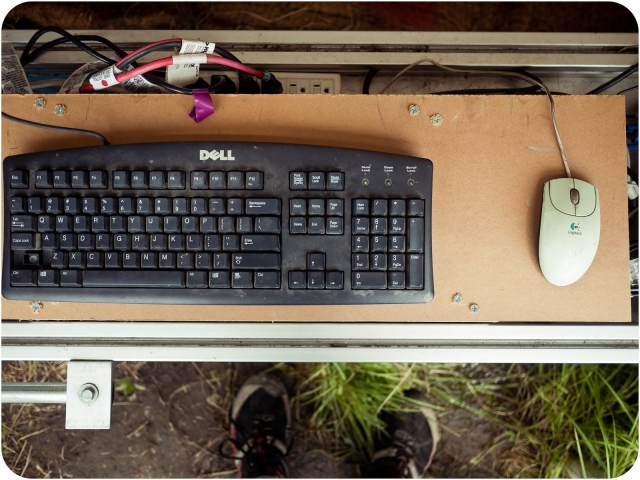
Also, Peter found this little guy hanging out in the stream:
 One time Dick fished out a fallen section of PVC pipe from the head-box and a foot-long crawfish fell out. I did not know they got that big!
One time Dick fished out a fallen section of PVC pipe from the head-box and a foot-long crawfish fell out. I did not know they got that big!
 We checked the instruments over once more to look for suspiciously unplugged or bent parts, and found none. The plug went in, switches were flipped, and everything turned on! Huzzah! The first hurdle was out of the way. Next, we briefly checked to see whether the instruments were still reading accurately. The Laser and the Massa seemed to be reading a bit off, which was worrying.
We checked the instruments over once more to look for suspiciously unplugged or bent parts, and found none. The plug went in, switches were flipped, and everything turned on! Huzzah! The first hurdle was out of the way. Next, we briefly checked to see whether the instruments were still reading accurately. The Laser and the Massa seemed to be reading a bit off, which was worrying.

After lunch, we realized that in our excitement to turn the cart back on, we’d neglected to level it as you must. So, we leveled it, and set up a level, flat sheet of metal of a known height (relative to the zero-point of the cart) to take readings off of with both the Laser and Massa. To our delight, the error disappeared, and both read the same distance that I had measured down to!
We got the cart to do a sample scan, just to get some (fairly useless) data to play with later. It seemed to work fine, which is extremely lucky. The carriage the instruments are all on moves across the stream in a series of passes–the length of which depends on the numbers we give it. So, we want to be very careful not to run the instruments into the solid, yet delicately placed rock-structures–for both the purpose of protecting the instruments AND of keeping these rock structures in their precise location.











